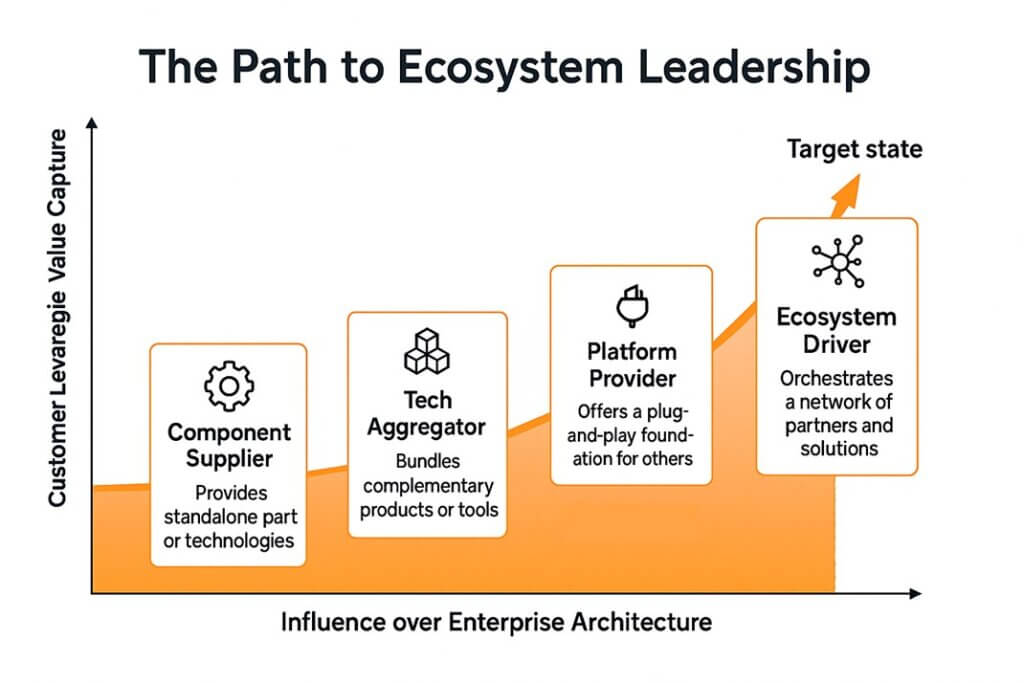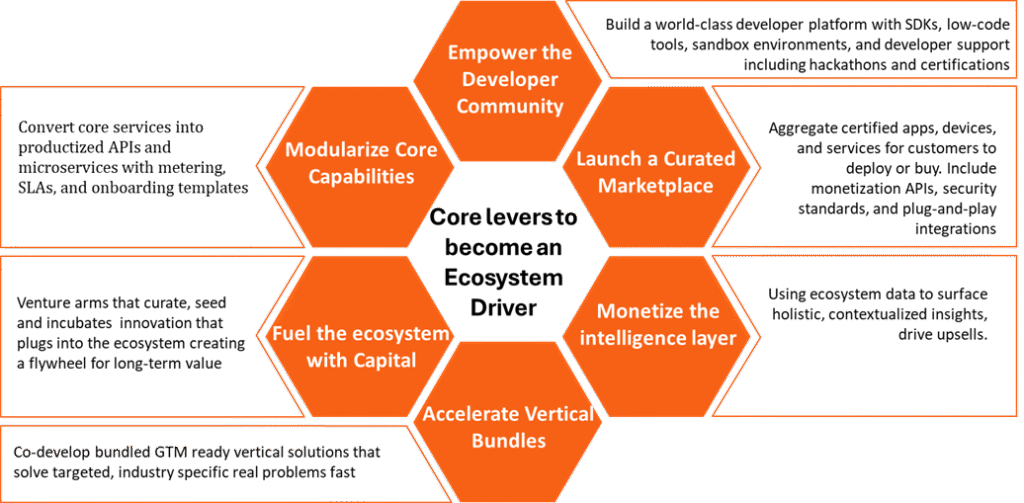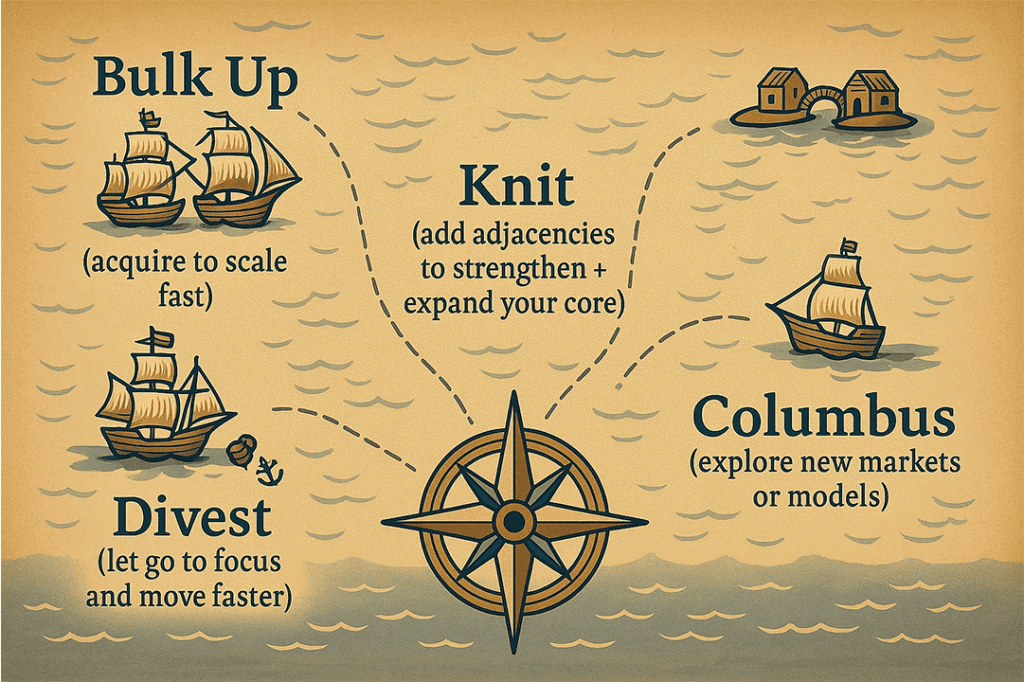Platforms build roads. Ecosystem drivers build cities.

The Big Idea
Every decade in tech has its golden aspiration. In the 2000s, it was to be “the product”. In the 2010s, it became “the platform”. But in the 2020s, for those seeking durable, category-defining dominance, the final form is becoming an ecosystem driver.

If platforms are roads—designed to enable movement and connection—then ecosystem drivers are cities. They concentrate activity. They attract builders. They control zoning, utilities, and commerce. And most critically, they scale value not just for themselves but for everyone inside.
Platform is a Step. Ecosystem is the Destination.
Salesforce didn’t just stop at CRM. It built AppExchange, allowing 7,000+ solutions to plug into its orbit, creating an $8B+ ecosystem projected to double this decade.
AWS went from compute engine to cloud economy—with a $4B+ marketplace that accelerates deals, amplifies partners, and locks in customers far beyond the instance.
These companies don’t just offer tools. They offer terrain. A place where others grow, and in doing so, they reinforce the gravitational center.

And now, in real time, companies like CrowdStrike and ServiceNow are moving deliberately down the same path:
- Beyond its marketplace, CrowdStrike’s Falcon Fund isn’t just investing in security startups—it’s curating innovation that fuels its ecosystem.
- ServiceNow’s 2,000+ partners aren’t just value-adds—they’re an operating layer, extending the core across industries.
This isn’t accidental. It’s strategy. It’s ecosystem design.
Why It Matters Now
The AI race is white-hot.
OpenAI, Anthropic, and Gemini are building extraordinary platforms. But history tells us: the best tech doesn’t always win. The best ecosystem does.
Who will host the developers? Who will monetize third-party innovation? Who will offer distribution, not just models?
These are the core levers that matter:

The companies that execute this playbook will own the gravity wells of AI.
The Rare Few
Becoming an ecosystem driver isn’t just bold—it’s brutally hard. It requires patience, capital, governance, and relentless orchestration. You need to incentivize third parties, curate quality, ensure seamless integration, and maintain control without stifling innovation.
That’s why while there are often multiple successful platforms in a category, only one or two become true ecosystem drivers. They become the index. The generational compounders. The gravitational centers around which entire industries organize.
The Real Question
Everyone wants to build a platform. Few will architect an ecosystem.
So here’s the real question:
Are you laying roads, or building a city?
Acknowledgment
The framing draws inspiration from research by MIT’s Peter Weill and Stephanie Woerner on “Thriving in an increasingly digital ecosystem”, as well as many brainstorming sessions with my team during my time as management consultant at PwC Strategy&.
I work with companies to jumpstart high-impact, inorganic growth plays—M&A scans, partner ecosystem builds, market entry initiatives, and corporate venture bets.
If you’re looking for seasoned, burst-capacity execution without the overhead of a full team, let’s connect.
About author:
Jitin Dhanani is a growth operator with 20+ years of experience scaling tech businesses via partnerships, acquisitions, and GTM. He’s held leadership roles at Vectra AI (cybersecurity unicorn), PwC Strategy&, Ixia (acquired by Keysight Technologies), and led 7e Wellness (D2C startup) and founded Dragon Capital (family office fund).


